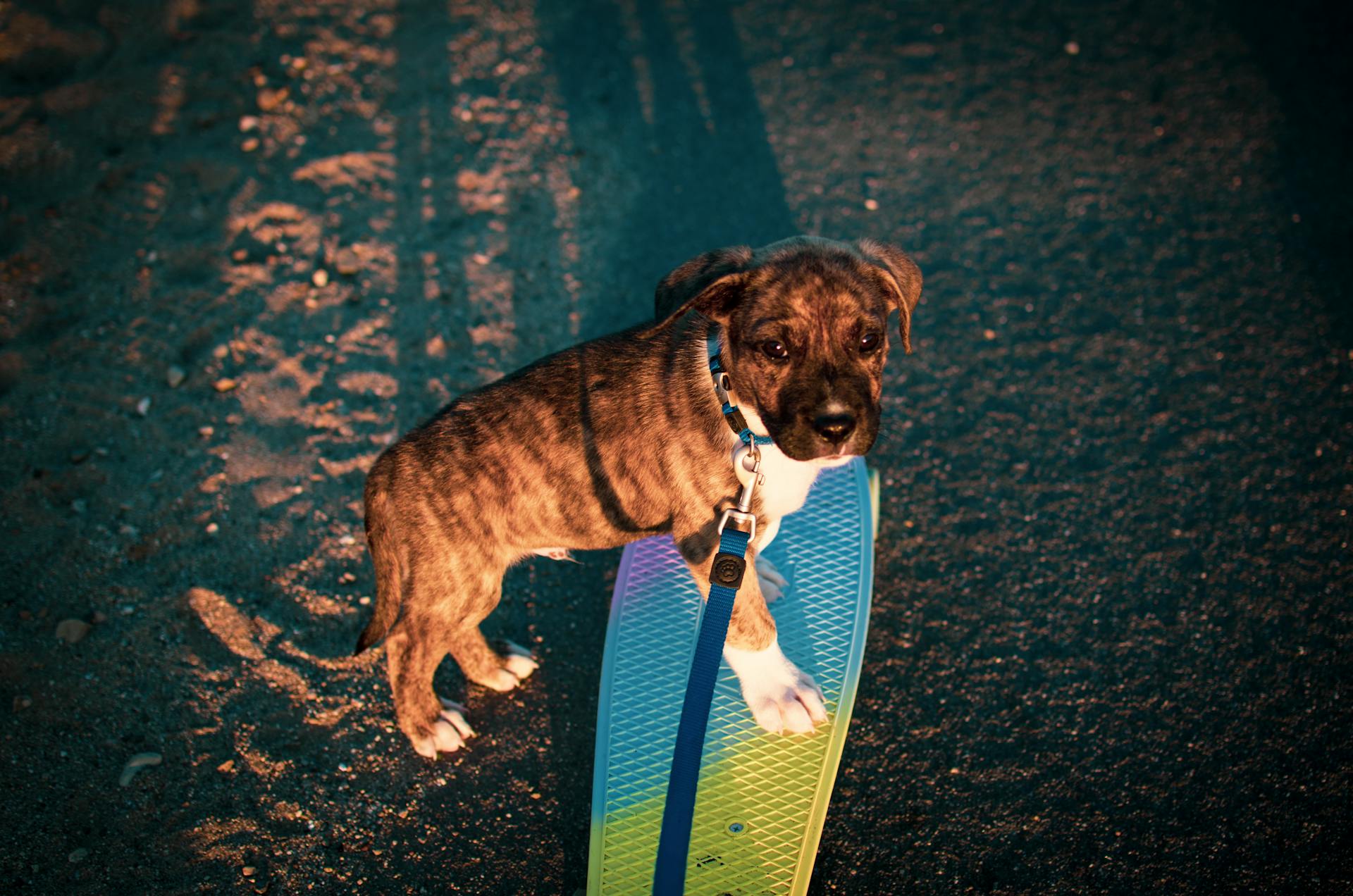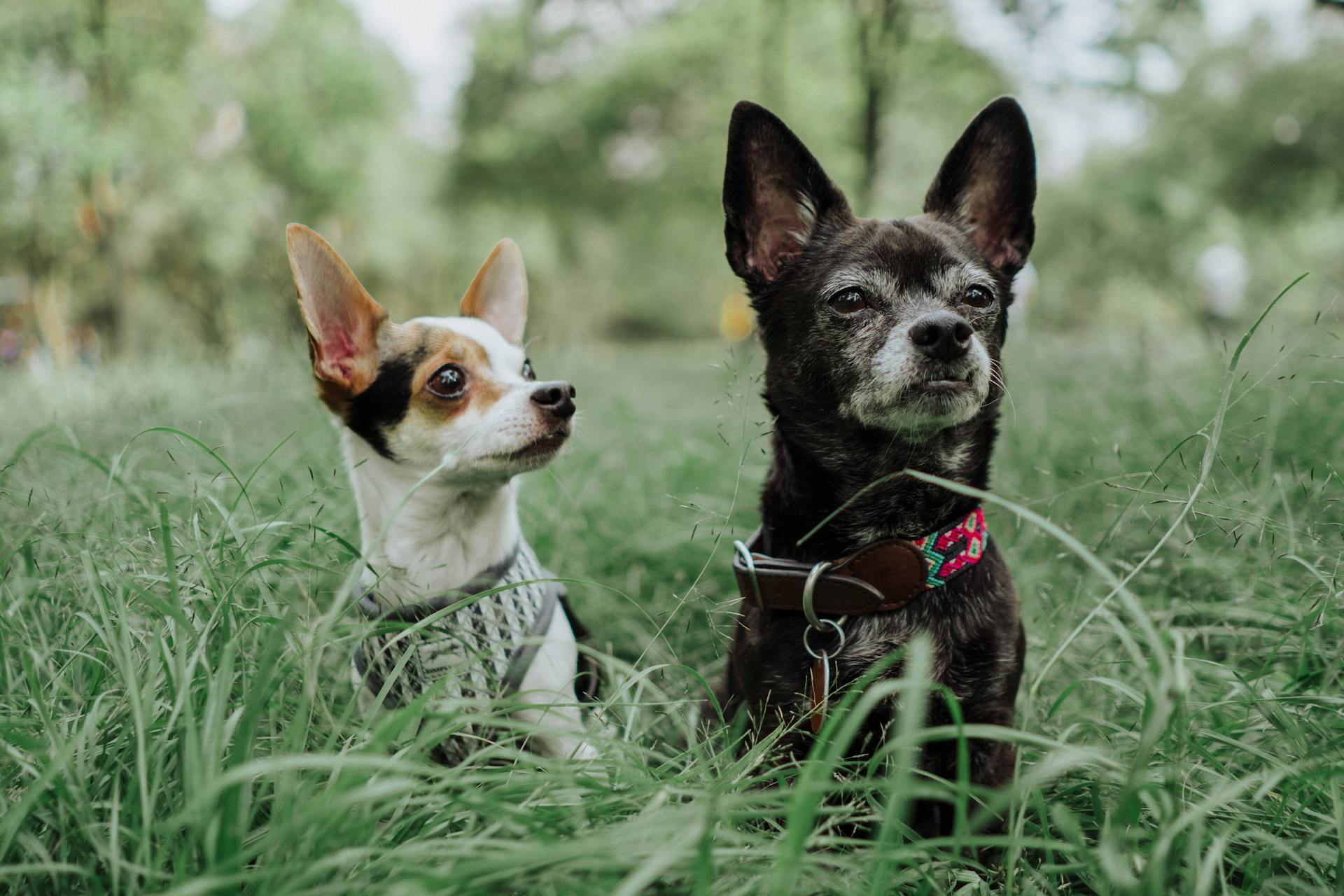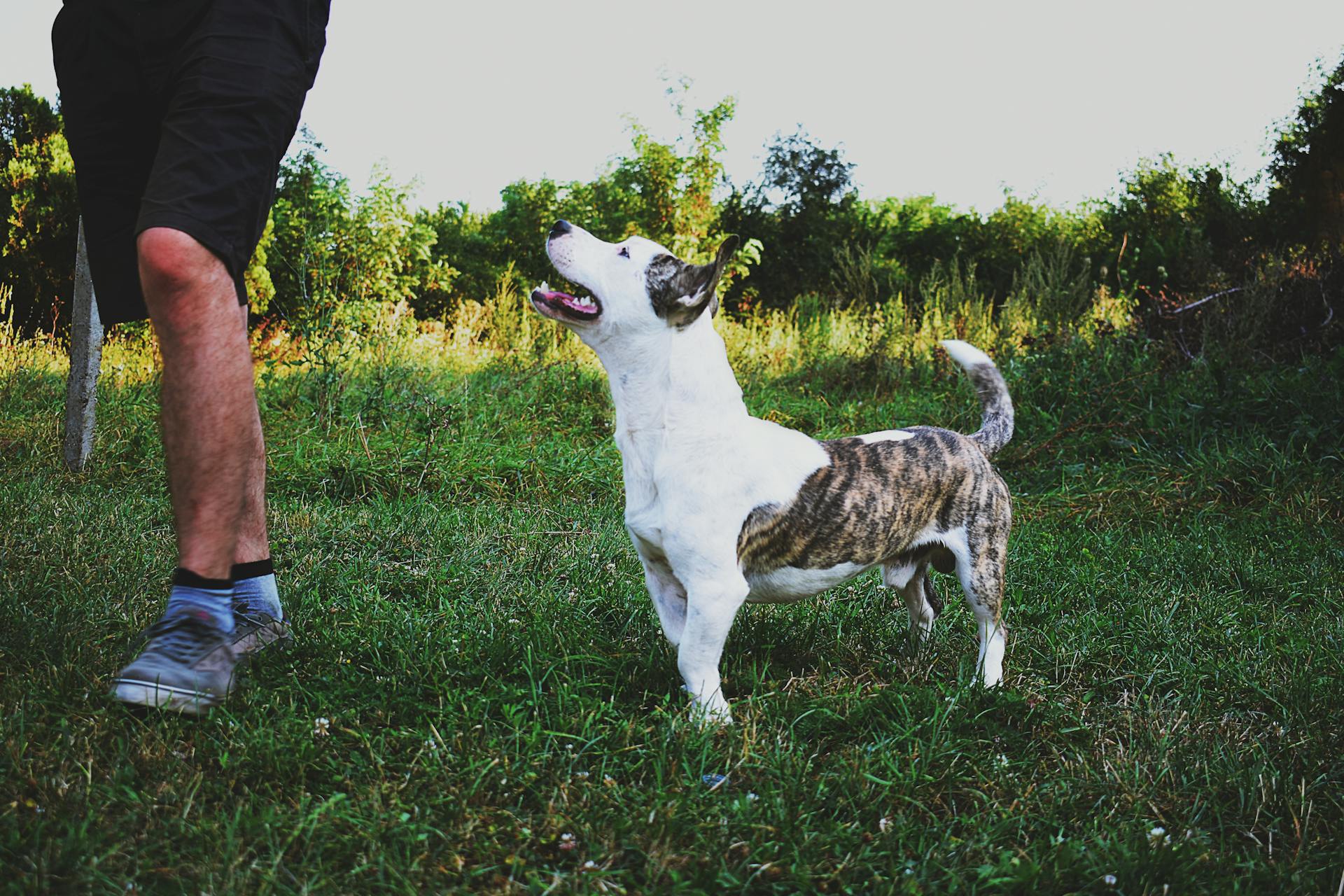
The Brindle Rhodesian Ridgeback is a unique and striking breed that's sure to turn heads. They're a variation of the traditional Rhodesian Ridgeback, characterized by their distinctive brindle coat pattern.
Their intelligence and loyalty make them a popular choice as family pets, but they're also working dogs at heart. Originally bred to hunt lions in Africa, they're naturally athletic and energetic.
Brindle Rhodesian Ridgebacks are a medium-sized breed, with males weighing between 80-120 pounds and standing 24-27 inches tall at the shoulder. Their brindle coat can vary in intensity, but it's always striking.
Their short, smooth coats require minimal grooming, making them a low-maintenance choice for busy owners.
Temperament and Behavior
Rhodesian Ridgebacks are known to be loyal and intelligent, but they can be somewhat aloof to strangers. This is not to be confused with aggression, as a well-bred Ridgeback will not attack a stranger for no reason.
They require consistent training and correct socialization, making them often not the best choice for inexperienced dog owners and families with younger children. Positive, reward-based training is essential for this breed.
Despite their athletic and imposing exterior, Rhodesian Ridgebacks have a sensitive side and can be easily damaged by harsh treatment, especially when they're young. Francis R. Barnes, who wrote the first standard in 1922, emphasized that "rough treatment ... should never be administered to these dogs, especially when they are young."
You might like: When Is a Female Dog Ready to Breed
Classification Theories
The Rhodesian Ridgeback's classification has been a topic of debate for many years, and understanding the breed's history can provide valuable insights into its temperament and behavior.
The breed's versatility in hunting has led to confusion among fanciers about its classification, with some considering it a Gundog, a Hound, or even a Sighthound.
The breed's original classification as a Gundog in the 1920s was not specifically about bird hunting, but rather about the dog's role in holding game at bay for the hunter.
In the Union's classification system at that time, Gundogs were expected to find game above ground, and the human hunter would then dispatch the game by firearm, whereas Sighthounds and Scenthounds were expected to dispatch the game unassisted.
Check this out: Game Bred American Pit Bull Terrier
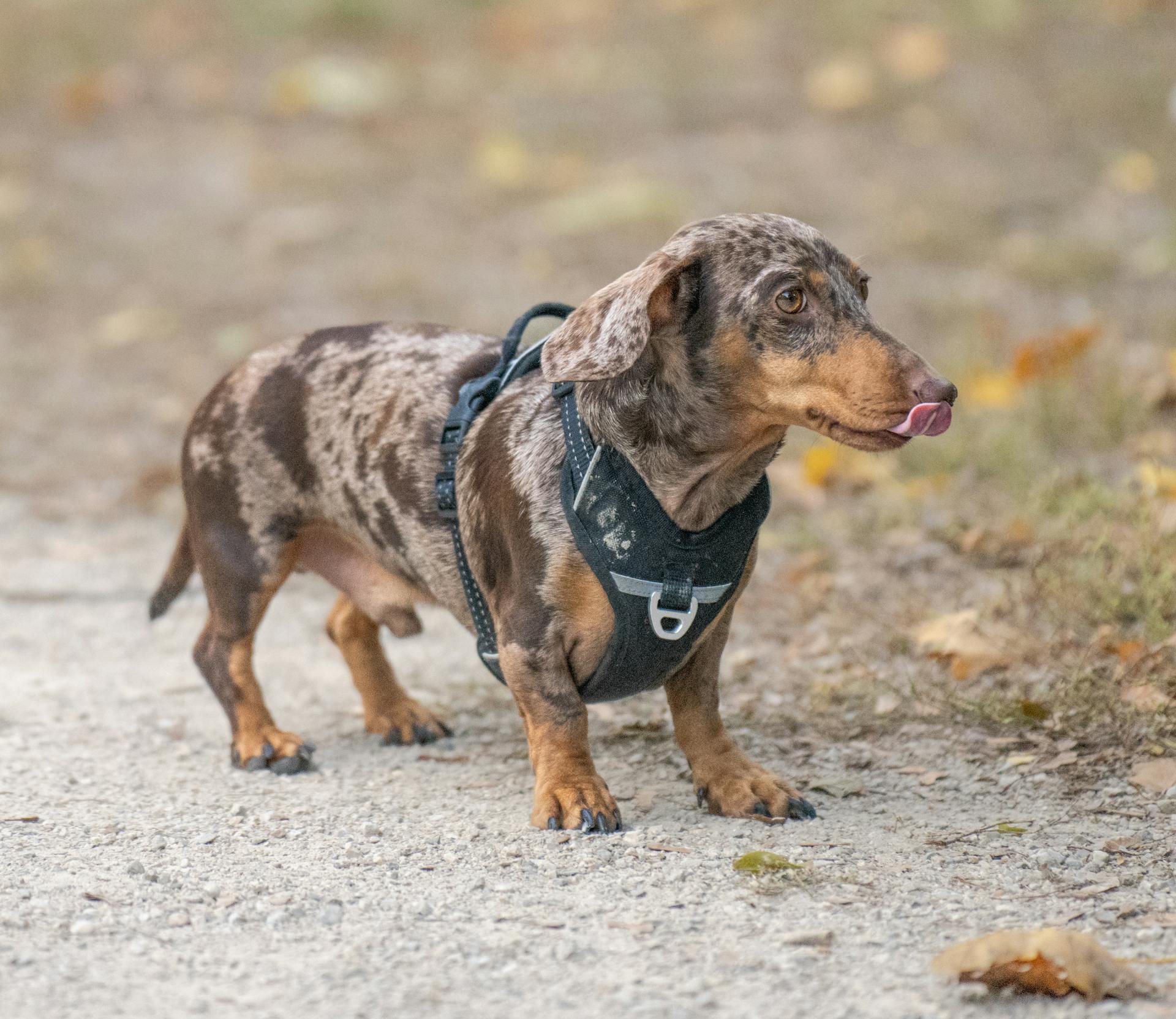
Francis Barnes, the breed's founder, deliberately chose the Gundog classification to reflect the breed's expected role in hunting.
Over time, the breed's classification was changed to Hound, and later to Sighthound by some registries, but the FCI currently classifies it as a Scenthound.
Here's a breakdown of the breed's current registry classifications:
Understanding the breed's classification can provide valuable insights into its temperament and behavior, and can help fanciers make informed decisions about their dog's role in hunting.
Temperament
Rhodesian Ridgebacks are loyal and intelligent, but they can be aloof to strangers, which is not the same as aggression.
They require consistent training and socialization, making them a better fit for experienced dog owners.
Rhodesian Ridgebacks have a sensitive side and can be easily hurt by rough handling, especially when they're young.
Excessively harsh training methods will likely backfire on a Ridgeback, and they accept correction only from someone they know and trust.
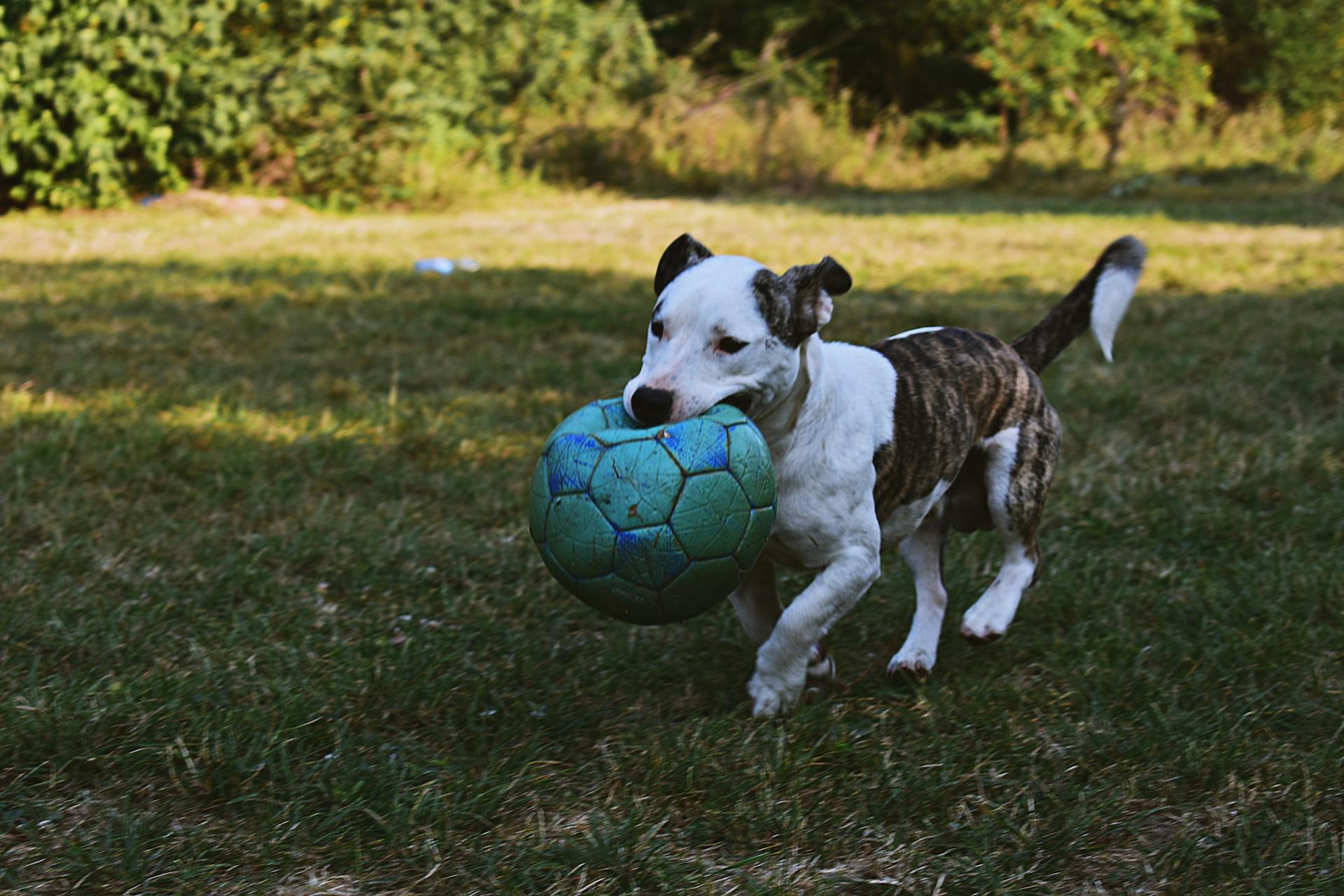
Despite their strong will, Ridgebacks are capable of high levels of obedience with positive, reward-based training.
They're generally good with other pets and household dogs, but some can be aggressive with unfamiliar dogs.
Ridgebacks are devoted to their family and make excellent watchdogs and protection dogs.
However, their power and size may make them a challenge for families with small children, and all interactions between dogs and kids should be closely supervised.
Early socialization is crucial for Ridgebacks, especially with cats and other animals, to prevent any potential issues.
Health and Maintenance
The brindle Rhodesian Ridgeback is a healthy breed overall, but like all breeds, it's not immune to certain health issues. Hip dysplasia and dermoid sinus are two conditions that can affect this breed.
Regular exercise is essential to keep your brindle Rhodesian Ridgeback happy and healthy. Aim for a daily workout, whether it's a long jog, walk, or play session. This breed also needs mental stimulation, so engage in activities like obedience training, agility, and nose work.
The brindle Rhodesian Ridgeback's grooming needs are relatively low. Brush its coat once or twice a week with a firm bristle brush, and bathe it occasionally when needed. You should also trim its nails, brush its teeth, and clean its ears to prevent infections.
Here are some health concerns to be aware of:
- Deafness: A 2022 study revealed a link between a genetic mutation in Rhodesian Ridgebacks and early-onset adult deafness.
- Dermoid Sinus: A congenital condition involving malformation of the neural tube, which can cause infections and spinal issues.
- Hip and Elbow Dysplasia: A condition that can lead to arthritis and mobility issues.
- Thyroid problems: The Rhodesian Ridgeback ranks number six in terms of most affected breeds for thyroid problems recorded by the Orthopedic Foundation for Animals.
The average life expectancy of a brindle Rhodesian Ridgeback is around 12 years, according to a UK study. Regular check-ups with your veterinarian can help identify any potential health issues early on.
Genetics of the Ridge
The genetics of the ridge in Swedish Vallhunds is a fascinating topic. The genotype responsible for the ridge was discovered by a consortium of researchers in 2007.
The ridge mutation is autosomal dominant, meaning it only takes one copy of the gene to express the trait. This is great news for breeders, as it makes it easier to predict the likelihood of a puppy having a ridge.
Well under 25% of puppies lack a ridge, indicating that a significant proportion of the breed are homozygous for the mutation. This means they have two copies of the ridge gene, one from each parent.
A genetic test is available to distinguish between dominant homozygotes (R/R) and heterozygotes (R/r). This can help breeders accurately predict the birth of ridgeless puppies.
Health
The Rhodesian Ridgeback is a sturdy breed, but like any dog, they're not immune to health issues. Hip dysplasia and dermoid sinus are two conditions that can affect them.
The breed ranks number six in terms of most affected breeds for thyroid problems recorded by the Orthopedic Foundation for Animals.
Bloat is another health concern for Ridgebacks, and it's a serious condition that requires immediate attention.
A UK study found the average life expectancy for a Rhodesian Ridgeback to be 12 years. This is a relatively long lifespan, and with proper care, many Ridgebacks can live well into their teens.
If you're considering bringing a Ridgeback into your family, it's essential to be aware of these potential health issues. Regular check-ups with a veterinarian can help identify any problems early on.
A UK breed survey puts the average lifespan at 10.25 years, which is still a respectable amount of time.
Care and Upkeep
Regular exercise is essential for Rhodesian Ridgebacks, requiring daily workouts such as long jogs, walks, or strenuous play sessions. This will help keep them happy and healthy.
A good rule of thumb is to keep your Ridgeback in a fenced area to prevent it from chasing small animals. This will save you and your neighbors a lot of stress.
Coat care is relatively low maintenance, requiring only weekly brushing and occasional bathing. This will keep their coat looking great.
Ridgebacks are prone to dermoid sinus, a congenital condition that can cause infections and spinal issues. Surgery may be required to treat this condition.
On a similar theme: Shiba Inu $1

As with all large breeds, it's essential to feed your puppy a large-breed puppy food that slows the rate of growth. This will help lessen the likelihood of hip dysplasia.
Regular grooming tasks include trimming nails, brushing teeth, and cleaning ears to prevent infections. This will help keep your Ridgeback healthy and happy.
While their grooming needs are minimal, Rhodesian Ridgebacks do need a lot of regular exercise to stay happy and healthy. Regular training and early socialization are also important to ensure that your Ridgeback's independent streak doesn't get the better of them.
A 2022 study revealed a link between a genetic mutation in Rhodesian Ridgebacks and early-onset adult deafness. This mutation to the EPS8L2 gene can cause dogs to lose their hearing as early as 4 months of age.
Discover more: Munsterlander Large
Similar Maintenance Breeds
If you're looking for breeds that require similar maintenance to the Rhodesian Ridgeback, you'll want to consider the Canadian Eskimo. This breed has a 100% similarity in maintenance needs to the Rhodesian Ridgeback.
The Weiler Dane is another breed that shares a 100% similarity in maintenance needs with the Rhodesian Ridgeback. They both require regular exercise and grooming.
The Carolina Dog is a breed that's well-suited for active families who can provide the necessary exercise and attention. It has a 100% similarity in maintenance needs to the Rhodesian Ridgeback.
If you're looking for a breed that's similar to the Rhodesian Ridgeback in terms of maintenance, the Smalandsstovare is a good option. This breed has a 100% similarity in maintenance needs to the Rhodesian Ridgeback.
The Black and Tan Coonhound is another breed that shares a 100% similarity in maintenance needs with the Rhodesian Ridgeback. They both require regular exercise and grooming to stay happy and healthy.
Here are some breeds that require similar maintenance to the Rhodesian Ridgeback:
- Canadian Eskimo: 100% similar in maintenance needs
- Weiler Dane: 100% similar in maintenance needs
- Carolina Dog: 100% similar in maintenance needs
- Smalandsstovare: 100% similar in maintenance needs
- Black and Tan Coonhound: 100% similar in maintenance needs
Frequently Asked Questions
Can Rhodesian Ridgebacks be brindle?
Unfortunately, the brindle pattern is no longer found in Rhodesian Ridgebacks, as the necessary genetic combination has been lost over many generations.
Is a Ridgeback a good family dog?
Yes, the Rhodesian Ridgeback can make a great family pet, but it's essential to find the right household that can provide the necessary care and attention. They thrive in families with a gentle and active lifestyle.
What two dogs make a Rhodesian Ridgeback?
The Rhodesian Ridgeback is a cross between the native Khoikhoi dog and a European breed, specifically a Mastiff.
Why are Rhodesian Ridgebacks special?
Rhodesian Ridgebacks are special due to their unique blend of power, independence, and courage, making them well-suited for hunting and family life. Their loyal and adaptable nature also makes them a great addition to many households.
How much is a Rhodesian Ridgeback puppy worth?
A Rhodesian Ridgeback puppy typically costs between $1800 and $2500, with prices higher for puppies from reputable breeders. This investment can be worth it for the unique characteristics and loyal companionship of this rare breed.
Featured Images: pexels.com
